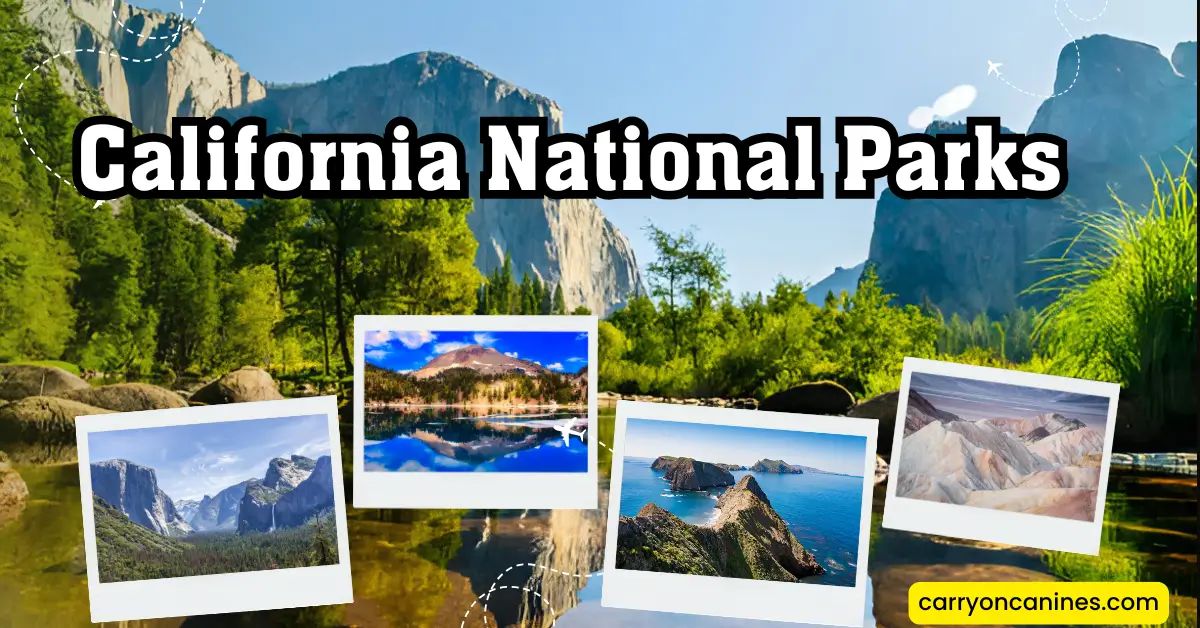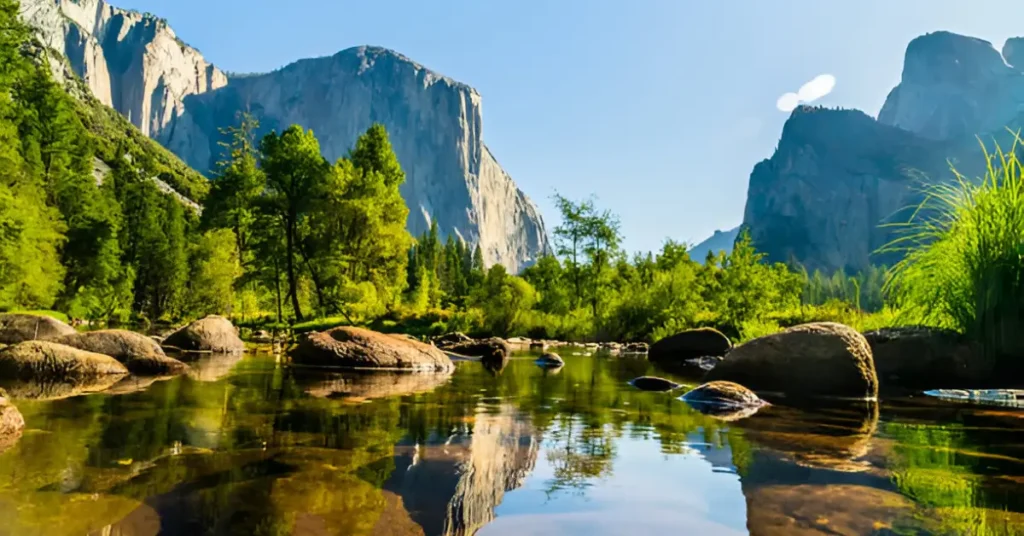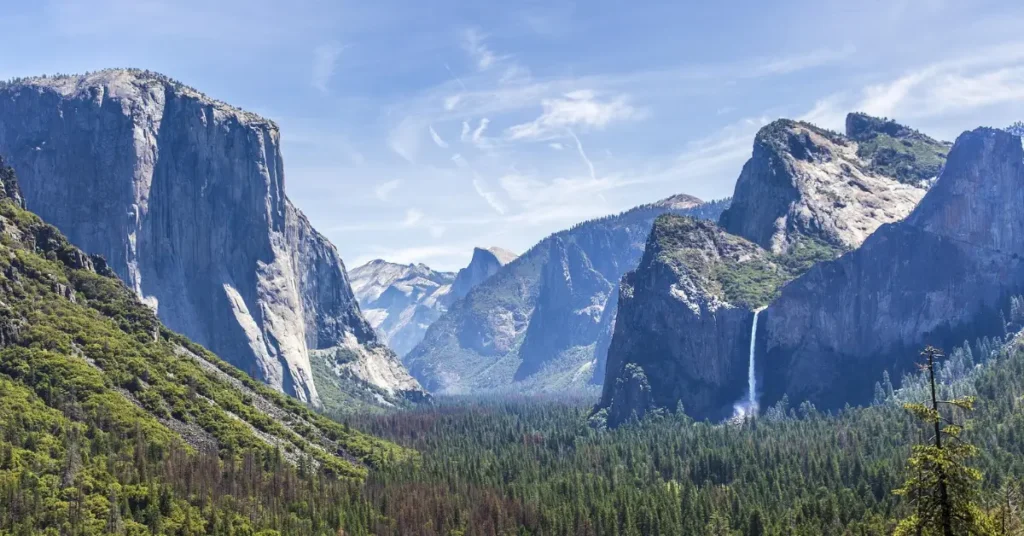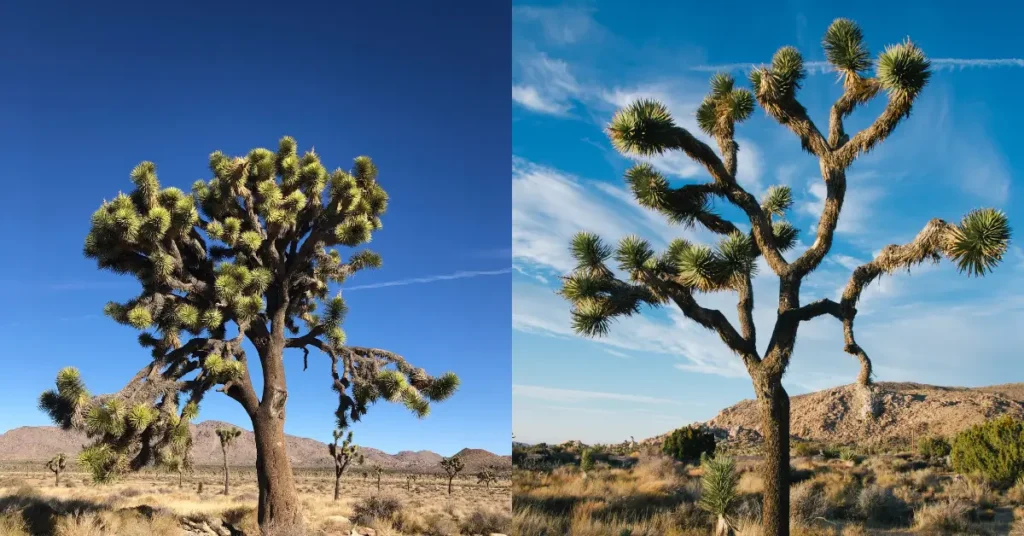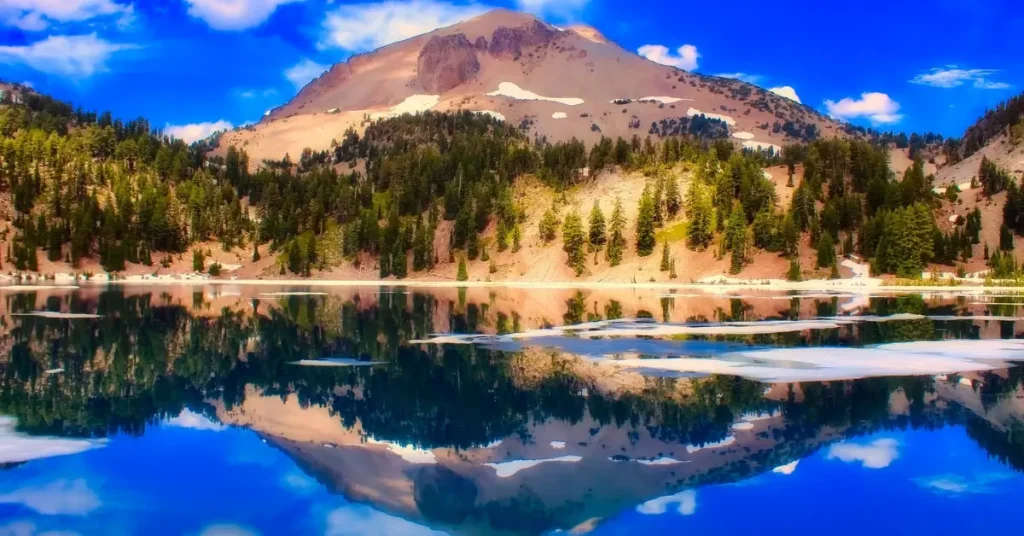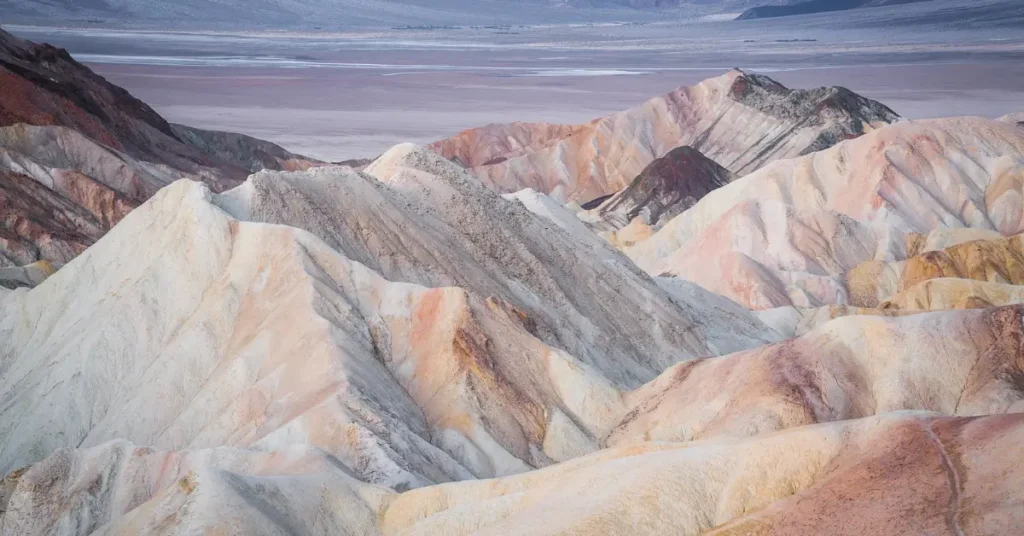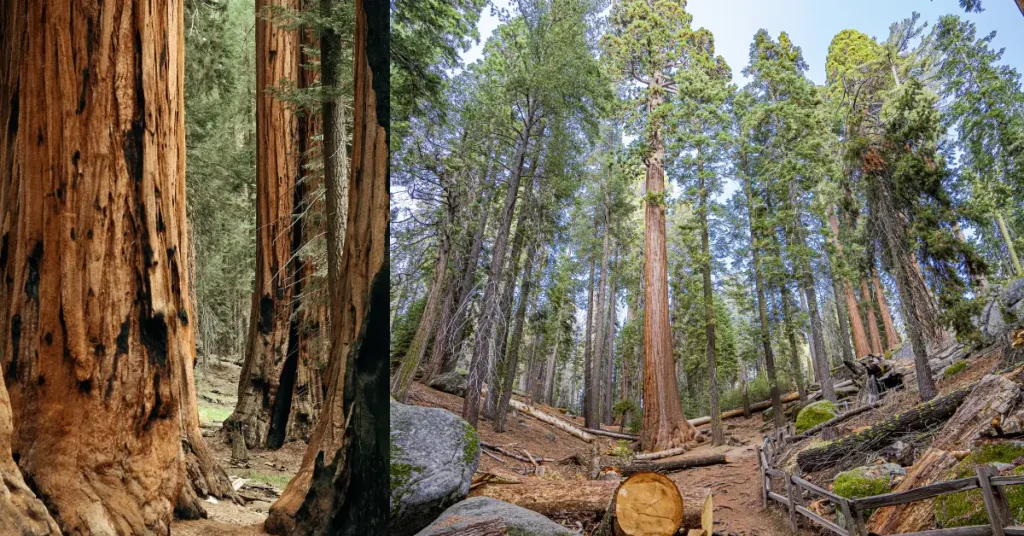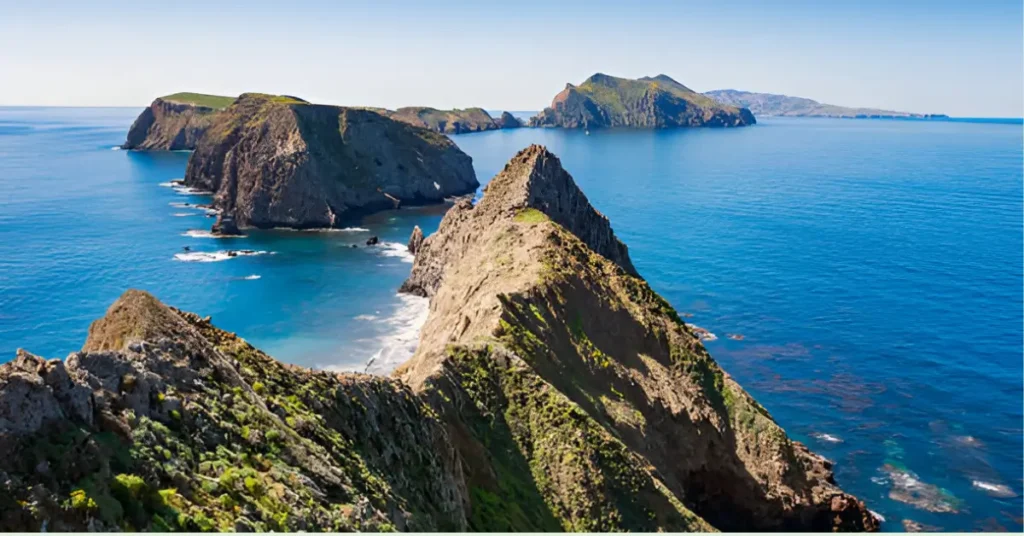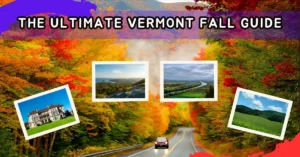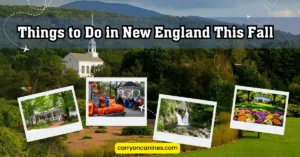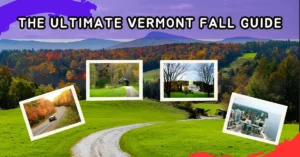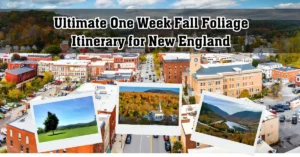California isn’t just a state — it’s a world of its own. Nowhere else in the U.S. can you drive from volcanic craters to coastal cliffs, then hike among the tallest trees on earth — all in one road trip. With nine designated national parks, California holds more than any other state, and each one offers something entirely unique.
Over the last five years, I’ve personally explored all nine parks across different seasons, and this guide is crafted from real experiences — not just copied facts. If you’re planning your first trip or trying to decide which parks fit your travel style, you’ll find the right insight here.
What California’s National Parks Offer
California’s national parks are incredibly diverse in both landscape and experience. From the rugged coastal islands to high subalpine forests, they represent nearly every major ecosystem found in North America. Each park also has its own ideal season for visiting — and surprisingly, summer isn’t always the best. For example, coastal and desert parks like Channel Islands and Joshua Tree are at their most pleasant in spring and fall.
Access and planning are just as varied. Some parks, such as Yosemite or Lassen, require advance permits for certain hikes or timed entries during peak months. It’s important to check these details in advance to avoid missing out. One of the most exciting aspects of California’s parks is the sheer variety of natural features. Whether you’re walking beneath ancient sequoia giants, exploring steaming volcanic vents, or standing beneath the world’s tallest redwoods, each park protects something rare, awe-inspiring, and uniquely Californian
Yosemite National Park
Yosemite is more than famous — it’s deeply emotional. The granite cliffs here don’t just tower over you; they seem to pause time. Whether you’re seeing El Capitan for the first time or hiking to a secluded alpine lake, Yosemite has a way of turning even short visits into lifelong memories.
Highlights You Should Not Miss
- ◦ Glacier Point – One of the most panoramic views in the entire U.S. National Park system. Go at sunrise or stay after sunset to beat the crowds.
- ◦ Tuolumne Meadows – At 8,600 ft, this high-country plateau is wildflower heaven in July. Hikes to Soda Springs and Gaylor Lakes are underrated and serene.
- ◦ Mariposa Grove of Giant Sequoias – Home to over 500 mature sequoias. The Grizzly Giant and Tunnel Tree feel like stepping into a prehistoric world.
- ◦ Half Dome – If you can secure the permit, the 14-mile hike is unforgettable. But even viewing it from Glacier Point or Sentinel Dome is worth the trip.
- ◦ Vernal and Nevada Falls via Mist Trail – This is where Yosemite’s water speaks loudest. Expect mist, steps, and awe.
Yosemite Travel Table
| Feature | Detail |
|---|---|
| Entrance Fee | $35 per vehicle |
| Best Season | May–June for waterfalls, Sep–Oct for fewer crowds |
| Timed Entry? | Yes, May to Sept (reserve early) |
| Lodging | Curry Village, Wawona Hotel, or backpacking permits |
| Altitude Range | 4,000 ft in valley to over 10,000 ft on Tioga Road |
Sequoia and Kings Canyon National Parks
I always pair these parks together because they share a border and, honestly, because one complements the other. Sequoia impresses with its ancient trees, while Kings Canyon delivers raw mountain drama without the crowds.
My Favorite Experiences in Sequoia
- ◦ Giant Forest – The General Sherman Tree is the largest living thing on earth. But wander the Congress Trail and you’ll find quiet groves away from tour buses.
- ◦ Moro Rock – A short but steep climb rewards you with breathtaking views of the Great Western Divide. I’ve done it at sunset and it’s worth every step.
- ◦ Crystal Cave – Reserve a guided tour in advance. It’s a surreal, marble-walled underground world unlike anything above.
Unmissable in Kings Canyon
- ◦ Zumwalt Meadow – Quiet, scenic, and flat — this trail follows a riverbend framed by granite domes.
- ◦ Roaring River Falls – Just a few minutes from the road, but feels hidden and serene.
- ◦ Grizzly Falls – Ideal for a picnic stop and easy to reach.
- ◦ Backcountry Access – The Rae Lakes Loop and Paradise Valley trails are some of the best multi-day hikes in the Sierra.
Park Snapshot
| Feature | Sequoia & Kings Canyon |
|---|---|
| Entry Fee | $35 (one fee covers both parks) |
| Best Time | June to September |
| Lodging | Wuksachi Lodge, Lodgepole Campground, Cedar Grove |
| Crowd Tip | Kings Canyon is quieter than Sequoia year-round |
| Altitude | Ranges from 5,000 to over 11,000 ft |
Joshua Tree National Park
When I first drove into Joshua Tree, I felt like I’d landed on another planet. Boulders the size of houses sit scattered across open desert, while the twisted Joshua trees reach toward the sky like something out of a Tim Burton sketch.
Experiences That Stand Out
- ◦ Hidden Valley Trail – A simple loop that offers a snapshot of the whole park: boulders, desert flora, and a peaceful hush.
- ◦ Cholla Cactus Garden – Go at sunrise or sunset to see the spines glow. Just be cautious — they’re nicknamed “jumping cholla” for a reason.
- ◦ Keys Ranch Tour – Book a ranger-guided tour of this historic homestead for a glimpse into early desert life.
- ◦ Stargazing – This is a designated International Dark Sky Park. Camp, recline, and stare up at more stars than you thought possible.
Travel Details
| Feature | Detail |
|---|---|
| Entry Fee | $30 per vehicle |
| Best Season | October to April |
| Summer Warning | Daytime temps can exceed 110°F |
| Lodging | Hidden Valley Campground, nearby Yucca Valley hotels |
| Special Tips | No gas or water in park — fill up before you enter |
Lassen Volcanic National Park
Lassen surprised me the most. I had no idea California had bubbling mud pots, steaming fumaroles, and volcanoes that resemble something out of Iceland — all in one spot. This park blends geological wonder with alpine beauty, and it’s often overlooked by travelers focused on Yosemite or the coast.
Top Things to Experience
- ◦ Bumpass Hell Trail – A must-do. This 3-mile round trip brings you face-to-face with boiling pools and sulfur vents on a boardwalk loop. Go early in the day and bring water — there’s no shade.
- ◦ Manzanita Lake – Perfect for kayaking, photography, or a peaceful walk. I once spent a full day here just watching the clouds drift over Lassen Peak’s reflection.
- ◦ Kings Creek Falls – A moderate 2.3-mile round trip hike ending at a beautiful 70-foot waterfall. One of the best places to feel the park’s alpine character.
- ◦ Devastated Area Interpretive Trail – A short, accessible loop that explains the aftermath of the 1915 eruption. It’s great for families or those short on time.
Quick Facts for Visitors
| Feature | Detail |
|---|---|
| Entry Fee | $30 per vehicle |
| Best Season | Mid-June to October (roads snow-covered otherwise) |
| Lodging | Manzanita Lake Campground, Drakesbad Guest Ranch |
| Closures | Main road often closed until late June |
| Tip | No cell signal — download maps before arrival |
Death Valley National Park
The hottest place on Earth isn’t just about extremes — it’s about contrasts. I visited in late February and was amazed at how quickly the landscape changes: from salt flats to towering dunes, colorful canyons to high overlooks.
Don’t Miss These Highlights
- ◦ Badwater Basin – The lowest point in North America at 282 feet below sea level. Walk out on the salt flats and you’ll understand the scale of the valley.
- ◦ Zabriskie Point – Best at sunrise. The sun rising over the golden hills is absolutely worth the early wake-up.
- ◦ Dante’s View – One of the best panoramic views in any U.S. national park. At over 5,000 feet, it’s significantly cooler here than in the valley below.
- ◦ Artist’s Drive and Palette – A scenic loop where the rocks are naturally tinted in greens, purples, and reds.
- ◦ Mesquite Flat Sand Dunes – Ideal at sunset or early morning. Bring water and watch for animal tracks in the sand.
Travel Essentials
| Feature | Detail |
|---|---|
| Entry Fee | $30 per vehicle |
| Best Season | November to March |
| Summer Travel | Not recommended — temps often 120°F+ |
| Lodging | Furnace Creek Inn, Stovepipe Wells Village |
| Fuel and Water | Available at Furnace Creek and Stovepipe Wells |
Redwood National and State Parks
When I visited the Redwoods for the first time, I remember standing next to a tree so tall I couldn’t even capture it in a wide-angle lens. These trees have been growing for 1,000+ years — and walking among them is a spiritual experience.
Must-See Spots
- ◦ Lady Bird Johnson Grove – A 1.5-mile loop through some of the tallest trees in the park. Go in the early morning for silence and filtered golden light.
- ◦ Fern Canyon – Featured in Jurassic Park 2, this narrow gorge is covered wall-to-wall in ferns and feels like another world.
- ◦ Howland Hill Road – A slow, scenic drive through massive trees — one of the best redwood experiences you can have without a long hike.
- ◦ Enderts Beach – A dramatic, driftwood-strewn beach with tide pools and seasonal whale watching. I saw gray whales spouting just offshore in March.
- ◦ Stout Grove – Short but majestic. This flat trail features some of the most picture-perfect redwoods in the entire park system.
Visitor Info Table
| Feature | Detail |
|---|---|
| Entry Fee | No fee for the national park; state parks may charge |
| Best Time | May to September |
| Closest Towns | Crescent City, Orick, Trinidad |
| Lodging | Elk Prairie Campground, hotels in Crescent City |
| Unique Fact | Redwoods can grow over 370 feet tall and live for 2,000 years |
Pinnacles National Park
Pinnacles is California’s newest national park, and it often gets skipped — but it shouldn’t. This compact park offers something few others do: caves, cliffs, and a real chance to see California condors flying overhead.
What to Explore
- ◦ Bear Gulch Cave Trail – Bring a flashlight and explore this short but exciting cave trail. Parts are seasonally closed for bat protection.
- ◦ High Peaks Loop – Probably the best hike in the park. It’s steep and narrow but leads to spectacular views and a great chance to spot condors.
- ◦ Balconies Cave and Cliffs Trail – From the west side of the park, this hike takes you through massive boulder-strewn canyons. It’s less crowded and equally beautiful.
- ◦ Rock Climbing – Pinnacles is a favorite among climbers of all levels, especially in cooler months.
- ◦ Wildlife Watching – Besides condors, you might spot bobcats, deer, coyotes, and a variety of lizards and birds.
Key Visitor Information
| Feature | Detail |
|---|---|
| Entry Fee | $30 per vehicle |
| Best Time | March to May, October to November |
| Summer Warning | Temps frequently over 100°F |
| Lodging | Campground on east side only; no road connects east and west entrances |
| Tip | West entrance is day-use only; east has more facilities |
Channel Islands National Park
Visiting Channel Islands is not as simple as driving into a park — and that’s exactly what makes it so special. I took the ferry from Ventura to Santa Cruz Island, and the feeling of being far removed from mainland California was immediate. There are no cars, no services, and no cell signal. Just cliffs, waves, wildflowers, and silence.
What to Do on the Islands
- ◦ Potato Harbor Hike (Santa Cruz Island) – A 5-mile round trip trail with coastal cliffs, sweeping Pacific views, and wildflower fields in spring.
- ◦ Sea Cave Kayaking – Rent a kayak or join a tour to explore the largest sea cave in the world — Painted Cave. It’s an unforgettable adventure.
- ◦ Whale and Dolphin Watching – During the ferry ride, I saw pods of dolphins jumping in and out of the water like they were racing us.
- ◦ Anacapa Island’s Lighthouse and Inspiration Point – Hike the short trail to the lighthouse, then continue to Inspiration Point for views that make you feel like you’re standing at the edge of the Earth.
- ◦ Backcountry Camping – It’s primitive, quiet, and perfect for disconnecting completely. Bring everything — there’s no food, water, or supplies on the islands.
Travel Details
| Feature | Detail |
|---|---|
| Entry Fee | Free, but ferry costs $65–$85 round trip |
| Best Time | March to May for wildflowers and wildlife |
| Access | Island Packers ferry from Ventura or Oxnard |
| Lodging | Backcountry camping only |
| Wildlife | Foxes, seals, dolphins, whales, pelicans |
California National Parks Overview Table
| Park Name | Best Season | Key Attractions | Entry Fee | Lodging |
|---|---|---|---|---|
| Yosemite | May–Oct | Half Dome, Yosemite Falls, Glacier Point | $35 | Lodges, campsites |
| Sequoia & Kings Canyon | Jun–Sep | Giant Forest, Moro Rock, Zumwalt Meadow | $35 (covers both) | Lodges, campsites |
| Joshua Tree | Oct–Apr | Skull Rock, Cholla Garden, Stargazing | $30 | Campgrounds, nearby towns |
| Lassen Volcanic | Jul–Sep | Bumpass Hell, Kings Creek Falls, Sulfur Works | $30 | Guest ranch, campsites |
| Death Valley | Nov–Mar | Badwater Basin, Artist’s Drive, Zabriskie Point | $30 | Hotels, campgrounds |
| Redwood | May–Sep | Fern Canyon, Stout Grove, Lady Bird Grove | Free (state park fees apply) | Campgrounds, motels |
| Pinnacles | Mar–May, Oct–Nov | High Peaks, Bear Gulch Cave, Condor Watching | $30 | East-side camping only |
| Channel Islands | Mar–May | Kayaking, Sea Caves, Whale Watching | Free (ferry required) | Primitive camping only |
Travel Tips for Visiting California’s National Parks
Plan for Variety: No two parks are the same. Pack for weather that may include snow, sun, wind, or fog — even in the same week.
Reserve Early: For Yosemite and Channel Islands especially, reservations sell out months in advance. Don’t wait until the last minute.
Check Closures: Lassen, Tioga Road (Yosemite), and higher-elevation trails often remain closed through early summer due to snow.
Respect Wildlife and Wilderness: These parks are wild. Keep food stored properly, stay on marked trails, and follow Leave No Trace principles.
Don’t Rush It: It’s tempting to try and visit multiple parks in one trip, but give each its own space. Even a smaller park like Pinnacles deserves a full day.
Final Thoughts
California’s national parks aren’t just scenic — they’re transformative. I’ve stood among giant sequoias during a quiet snowfall, paddled through sea caves off Santa Cruz Island, and watched the sun set behind jagged peaks in Yosemite. These parks are stories waiting to be written — and you don’t have to be a hardcore hiker to enjoy them. Whether you’re planning a family trip, solo escape, or a couple’s adventure, this guide gives you everything you need to travel smarter and deeper into the wild heart of California.

